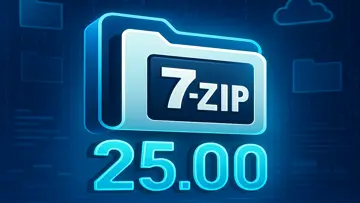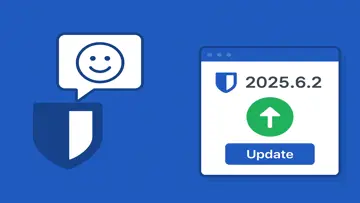3.13 Cassaforte da installare
epTools is a comprehensive platform designed for evaluating heart rhythm disorders. It is a versatile app that can be used on both iPhone and iPad devices.
The platform offers a range of resources, including commonly used algorithms for localizing arrhythmia substrates and reference guides that assist in identifying clinical conditions associated with cardiac rhythm abnormalities. These algorithms are seamlessly integrated into an intuitive user interface, guiding users through a series of questions and providing graphical visualizations of their progress and analysis results.
One particularly useful feature is the ability to save decision paths as images, which can be stored in the photo album and shared with colleagues. This facilitates effective communication and collaboration among healthcare professionals.
epTools also provides access to scientific reference materials that are cited within the app. Many of these references are freely available or easily accessible for subscribers.
The platform includes a variety of algorithms for localizing different types of arrhythmias. For example, it offers algorithms by Arruda, Milstein, Taguchi, D'Avila, Li, Pambrun, Baek, and Crionon et al to localize accessory pathways and differentiate between WPW and FVF using O'Leary et al.
When it comes to localizing atrial tachycardias, epTools offers algorithms based on Ellenbogen et al and Kistler et al, as well as the De Ponti et al tool for calculating the mapping window required to identify the isthmus of an AT. The Miyazaki et al tool aids in localizing macro reentrant ATs based on pacing responses.
To assist with the diagnosis of preexcitation variants, J-wave syndromes, and entrainment site localization, epTools provides dedicated tools.
For localizing ischemic ventricular tachycardia, the platform offers three algorithms based on Miller et al, Segal et al, and Andreu et al. These algorithms assist in localizing exit sites for VT in the context of single or multiple myocardial infarctions, based on findings on 12-lead electrocardiograms during VT.
epTools also includes algorithms by Ito, Park, and Enriquez et al for localizing idiopathic ventricular tachycardia and premature ventricular contractions via ECG findings. Additionally, there are eight tools available to differentiate right from left ventricular (aortic cusp) outflow tract arrhythmias using various indices.
The platform provides two tools for differentiating endocardial from epicardial VTs, employing the MDI by Daniels et al and the Berruezo criteria.
In terms of disease assessment, epTools offers consensus criteria for ARVD/C and Short QT Syndrome. It provides risk calculation tools for various scenarios such as 5-year risk of SCD in HCM (O'Mahon et al), LQTS (1-2-3-LQTS-Risk), inadequate DFT safety margin (Hsu et al), LA arrhythmogenic substrate (Kosiuk et al, D'Ambrosio et al), 30-day mortality after PPM and ICD lead extraction (Brunner et al), and 1-4 year mortality in primary prevention ICD placement (Bilchick et al, SHOCKED). Additionally, it offers scoring tools like the Shanghai score for Brugada Syndrome and VT prediction in ARVD/C (Cadrin-Tourigny et al), as well as tools such as Suspicious Index In Lyme Carditis, PADIT infection calculator, and ABC-VT Risk Score calculator.
An CIED/electrocautery manager is also integrated into epTools, allowing users to create and share detailed preoperative plans via text or email.
Finally, the platform provides a valuable resource in the form of clinical guidelines and consensus statements.
With regards to differentiating SVT from VT using 12-lead electrocardiogram features, epTools incorporates algorithms by Brugada, Verckei, and Moccetti et al.
Additionally, epTools includes tools for calculating stroke risks such as CHADS₂, CHA₂DS₂VASc, and ATRIA scores, as well as bleeding risk using the HAS-BLED score. It also provides tools for QT correction heart rate using the Bazett or Fredericia correction formulas and for evaluating left bundle branch block using the Bogosian and Yankelson et al criteria. Lastly, it features a CL to bpm interconverter.
For reference examples utilizing the various tools included in epTools, users can visit our website at www.busy-being-born.com/examples.
Panoramica
epTools è un software Commerciale nella categoria Casa e Hobby sviluppato da Busy Being Born Solutions, LLC.
L'ultima versione di epTools is 3.13, pubblicato su 02/07/2025. Inizialmente è stato aggiunto al nostro database su 06/11/2023.
epTools viene eseguito sui seguenti sistemi operativi: iOS.
Gli utenti di epTools ha dato un punteggio di 5. 5 stelle su 5.
Imparentato
3D ECG Leads
Why 3D ECG Leads? An ECG Lead Placement Guide Inaccurate placement of ECG leads can result in erroneous diagnoses and may lead to unnecessary further investigations or treatments (Jowett et al., 2005; Toosi and …ACC Connect
ACC Connect, accessible to members of the American College of Cardiology, presents a comprehensive platform designed to facilitate professional engagement among its users.AFibLife™
The AFibLife™ app offers a range of tools to help individuals comprehend the impact of atrial fibrillation on their lives and manage their condition effectively.ASE TTE
The ASE TTE iPad App 2.0.1 offers comprehensive animated content derived from the American Society of Echocardiography’s DVD titled "How to Perform a Transthoracic Echocardiographic Study Volume 1: Transducer Position and Anatomy." This …Cardiac Device Challenge
The Cardiac Device Challenge app represents a significant advancement for healthcare professionals engaged in the management of cardiac implantable electronic devices.Cardiac Trials
Cardiac Trials is an educational resource that compiles significant clinical trials in the field of cardiology, providing easy access to essential information.App Store
con UpdateStar freeware.
Ultime recensioni
|
|
Ashampoo Windows AdBlock
Ashampoo Windows AdBlock: Semplice Blocco degli Annunci per gli Utenti Windows |
|
|
UltraISO
Potente strumento di gestione ISO per tutte le esigenze relative alle immagini disco |
|
|
VAIO Content Metadata XML Interface Library
Migliora la tua esperienza VAIO con la libreria di interfacce XML per metadati dei contenuti di Sony |
|
|
DiskInternals Office Recovery
Recupero senza sforzo di file Office danneggiati |
|
ASP. NET PDF Generator
Trasforma i tuoi documenti con ASP.NET generatore di PDF |
|
|
mediAvatar Video to DVD Converter
Trasforma i tuoi video in DVD senza problemi con mediAvatar |
|
|
UpdateStar Premium Edition
Mantenere aggiornato il tuo software non è mai stato così facile con UpdateStar Premium Edition! |
|
|
Microsoft Edge
Un nuovo standard nella navigazione web |
|
|
Google Chrome
Browser Web veloce e versatile |
|
|
Microsoft Visual C++ 2015 Redistributable Package
Migliora le prestazioni del tuo sistema con Microsoft Visual C++ 2015 Redistributable Package! |
|
|
Microsoft Visual C++ 2010 Redistributable
Componente essenziale per l'esecuzione di applicazioni Visual C++ |
|
|
Microsoft OneDrive
Semplifica la gestione dei file con Microsoft OneDrive |









